“Personally, I am very fond of strawberries and cream, but I have found that for some strange reason, fish prefer worms.” – Dale Carnegie
The ubiquitous Buyer’s Persona, a template for determining what appeals to a purchaser, is outdated. The same is true for the standard “check the demographic boxes” method to build advertising audiences.
Consider another way. What if you could accompany your prospect on an outing to purchase a new smart home system? What would you learn?
He or she will no doubt buy based on Maslow’s Hierarchy of Needs. The solution would have to meet the demands for security, fit the budget, and work with existing appliances. Yet there are other reasons for choosing a vendor.
Factors also influence your buyer at the top of the hierarchy. It may satisfy the personal desire of incorporating the latest technology (esteem). It may make them feel they are helping build a safer neighborhood (self-actualization). Beyond the basic requirements, emotion is a deciding factor.
The same is true for B2B buyers. Ethical procurement ensures the company’s preconditions are met.
Yet nonsubjective factors come into play. These range from enhancing the buyer’s career reputation to reducing anxiety, and more.
Unfortunately, many product teams, and by extension salespeople, focus only on functional elements.
The key to success is to recognize the full spectrum of influences behind business purchases. Then tailor your message, and your proposal, accordingly.
Meeting specifications at an acceptable price are table stakes. So is regulatory compliance. They are nonsubjective. Either a product complies, or it doesn’t.
What are the subjective elements? A study by Bain & Company recognized and categorized 40 distinct kinds of value B2B buyers look for. They then arranged them into a pyramid similar to Maslow’s.
At the bottom of the triangle are the minimum requirements just mentioned. One layer above that are considerations affecting improved economics and performance. At the top is vision and social responsibility. However, most of the factors lay in between.
Matching up to “acceptance” in Maslow’s model is “ease of doing business”. This layer is further divided into nonsubjective and subjective elements.
Integration and component quality are fairly easy to quantify. Measuring things like vendor responsiveness and cultural fit are harder. In the Bain model, career and personal goals correspond to Maslow’s “esteem” layer.
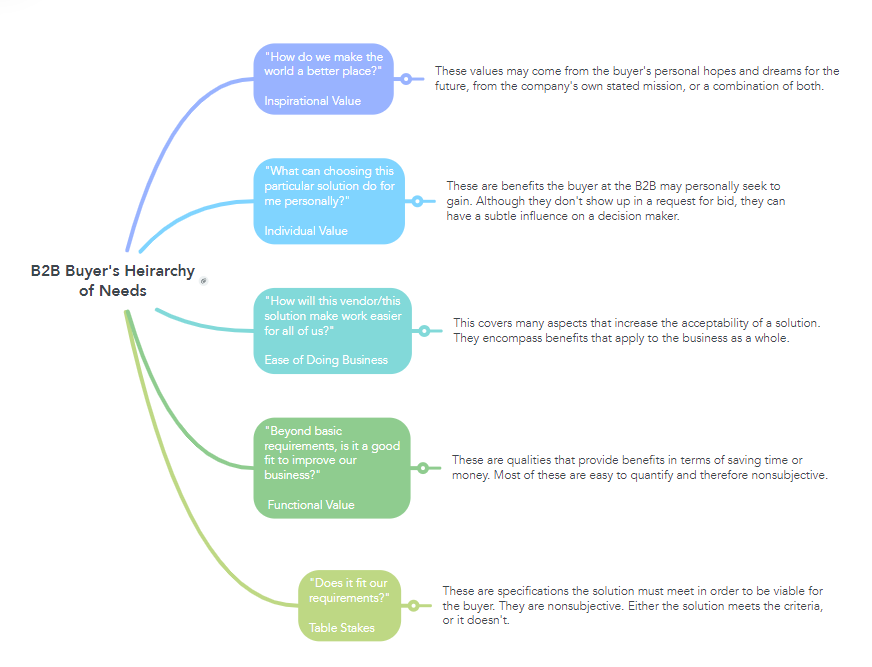
This theory was put to test in a study published by Harvard Business Review. That research found that the 36 non-table-stakes factors were a better predictor for measuring customer loyalty. The more of these essential points a vendor excelled at, the higher value they provided. These items met the emotional needs of the B2B buyer.
Key to successfully implementing this strategy is determining which factors are important to YOUR buyer. Focus on those most meaningful to them, and aspects in which you can excel.
Here are some ways to uncover this information.

Survey your customers. Past data about purchases from your best clients is a good start. However, it probably doesn’t go far enough.
When building a questionnaire, avoid questions that only serve to affirm known table stakes. Don’t ask “On a scale of 1 to 5 how important is price?”. Instead ask, “Which of the following benefits would you pay more for?”.
Talk to customers, prospects, and lost opportunities. It is important to know why buyers would choose you without putting them on the spot.
For example, inquire about future technologies that most interest your prospect. Understand both their personal passions and their company’s stated direction.
Study information from customer support tickets, including live calls and chatbots. Factor in sentiment analysis to determine how important an issue is.
Mine industry and competitive data. Google search terms, social media monitoring, and analyst reports are all good places to look.
Let AI do it for you. Nothing can beat the power of social media engines. They have a vast amount of information about users. This includes all kinds of personal interests, likes and dislikes, and what influences them.
However, this only comes into play when used for promotion. You cannot download the secret sauce on your buyers. To use social data to your advantage, precisely target your message. Build a “matched audience” using your best customers as a base to uncover hidden desires. Advertising towards groups is also effective since birds of a feather flock together.
Once you have your data, arrange it all in a reimagined buyer persona. Here is a free template to use to get started.
Need help identifying your buyer’s unique needs? Town Crier can help. Call us at 214-732-7770, email tracy@towncriergroup.com or visit www.towncriergroup.com

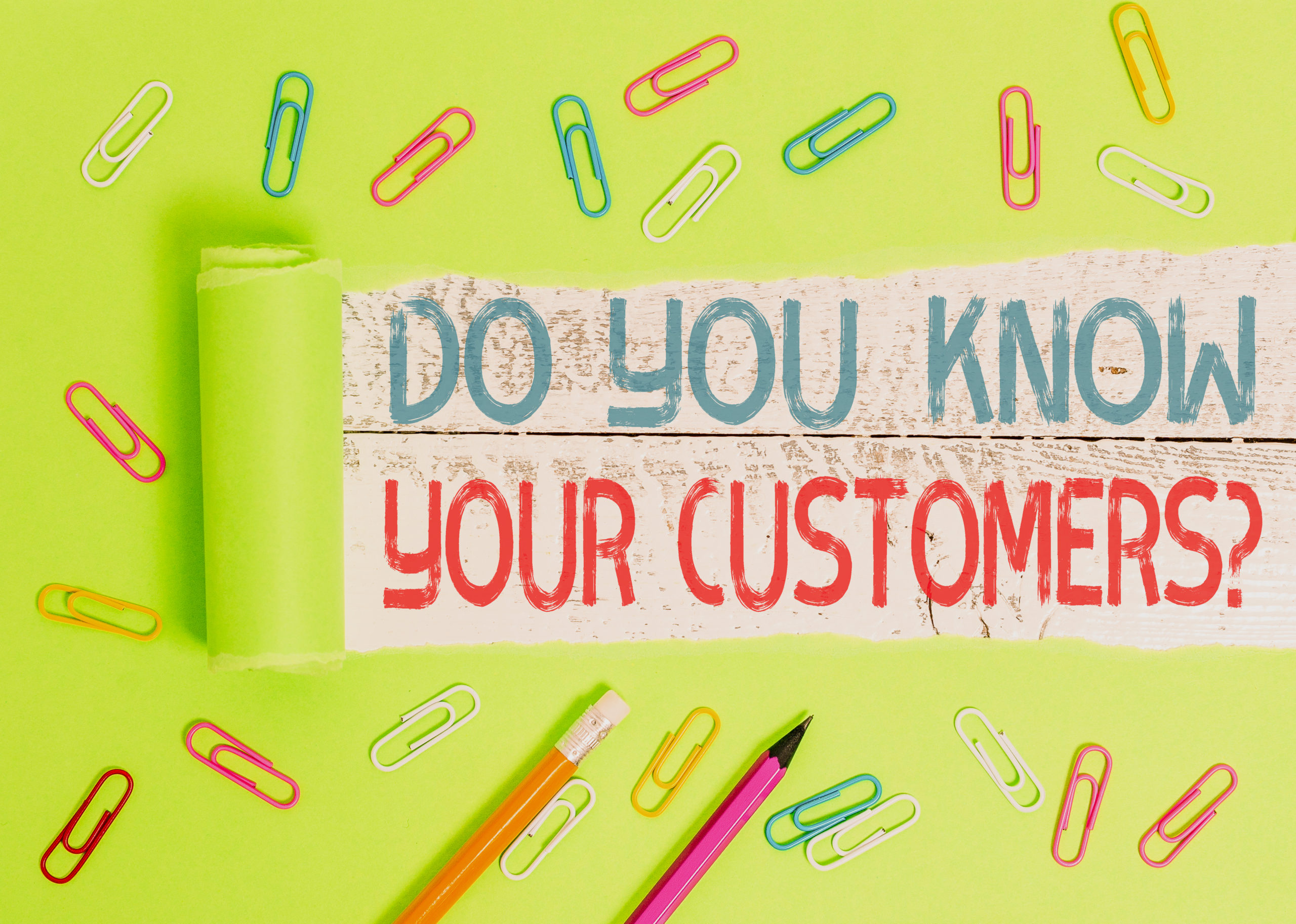
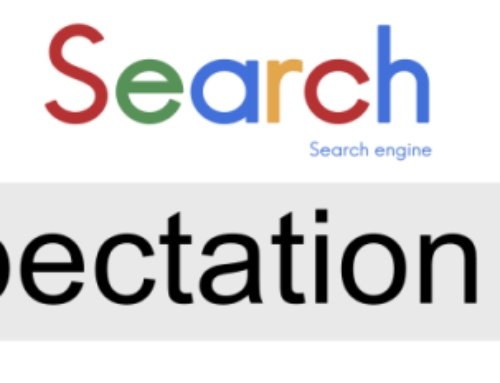
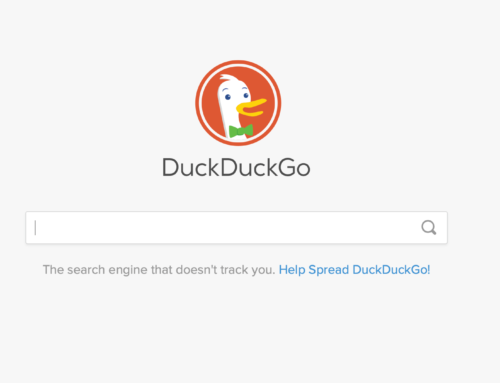
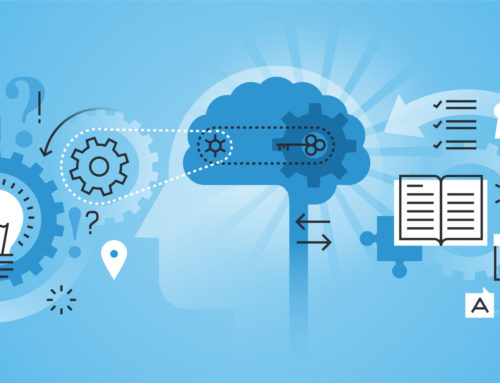
![B2B Leads: How Many Do You Need? [Here’s How to Find Out]](https://towncriergroup.com/wp-content/uploads/2021/03/entry-conversion-exit-shutterstock_539917381-scaled-500x383.jpg)